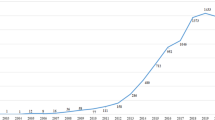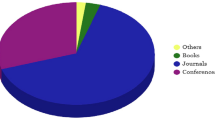Abstract
In order to effectively utilize the explicit user relationship and implicit topic relations for the detection of micro-blog user interest communities, a micro-blog user interest community (MUIC) detection approach is proposed. First, through the analysis of the follow relationship between users, we have defined three types of such relationships to construct the user follow-ship network. Second, taking the semantic correlation between user tags into account, we construct the user interest feature vectors based on the concept of feature mapping to build a user tag based interest relationship network. Third, user behaviors, such as reposting, commenting, replying, and receiving comments from others, are able to provide certain guidance for the extraction of micro-blog topics. Hence, we propose to integrate the four mentioned user behaviors that are considered to provide guidance information for the traditional latent Dirichlet allocation (LDA) model. Thereby, in addition to the construction of a topic-based interest relationship network, a guided topic model can be built to extract the topics in which the user is interested. Finally, with the integration of the afore-mentioned three types of relationship network, a micro-blog user interest relationship network can be created. Meanwhile, we propose a MUIC detection algorithm based on the contribution of the neighboring nodes. The experiment result proves the effectiveness of our approach in detecting MUICs.
创新点
-
(1)
基于特征映射思想更准确地表征了用户兴趣关系。
-
(2)
融合了用户的转发、评论、回复、他人评论等用户行为构建了有指导的用户兴趣主题提取模型。
-
(3)
结合局部信息思想和微博用户兴趣关系网络特点, 提出了融合显式用户关系和隐式主题关系的微博用户兴趣社区发现方法。
Similar content being viewed by others
References
Howden C, Liu L, Li Z Y, et al. Virtual vignettesthe acquisition, analysis, and presentation of social network data. Sci China Inf Sci, 2014, 57: 032104
Yuan X H, Buckles B P, Yuan Z S, et al. Mining negative association rules. In: Proceedings of the 7th IEEE Symposium on Computers and Communications, Taormina, 2002. 623–628
Fei Z S, Ding H C, Xing C W, et al. Performance analysis for range expansion in heterogeneous networks. Sci China Inf Sci, 2014, 57: 082305
Sachan M, Contractor D, Faruquie T A, et al. Using content and interactions for discovering communities in social networks. In: Proceedings of the 21st International Conference on World Wide Web, Lyon, 2012. 331–340
Sun X L, Lin H F. Topical community detection from mining user tagging behavior and interests. J Am Soc Inf Sci Technol, 2013, 64: 321–333
Zhao Z Y, Feng S Z, Wang Q, et al. Topic oriented community detection through social objects and link analysis in social networks. Knowl Syst, 2012, 26: 164–173
Jin D, Yang B, Baquero C, et al. Markov random walk under constraint for discovering overlapping communities in complex networks. J Stat Mech: Theor Exp, 2011, 2011: 05031
Massaro E, Bagnoli F, Guazzini A, et al. Information dynamics algorithm for detecting communities in networks. Commun Nonlin Sci Numer Simul, 2012, 17: 4294–4303
Wu F Yeung K H. Incorporating profile information in community detection for online social networks. Phys A: Stat Mech Appl, 2014, 405: 226–234
Ruan Y Y, Fuhry D, Parthasarathy S. Efficient community detection in large networks using content and links. In: Proceedings of the 22nd International Conference on World Wide Web, Rio de Janeiro, 2013. 1089–1098
Li K, Pang Y. A unified community detection algorithm in complex network. Neurocomputing, 2013, 130: 36–43
Wu Z Y, Zou M. An incremental community detection method for social tagging systems using locality-sensitive hashing. Neur Netw, 2014, 58: 14–28
Xin Y, Yang J, Xie Z Q. A semantic overlapping community detection algorithm based on field sampling. Expert Syst Appl, 2015, 42: 366–375
Liu Q, Li S J. Word similarity computing based on How-net. Int J Comput Linguist Chin Lang Proc, 2002, 7: 59–76
Blei D M, Ng A Y, Jordan M I. Latent Dirichlet allocation. J Mach Learn Res, 2003, 3: 993–1022
Lancichinetti A, Fortunato S, Kertész J. Detecting the overlapping and hierarchical community structure of complex networks. New J Phys, 2009, 11: 033015
Newman M E J, Girvan M. Finding and evaluating community structure in networks. Phys Rev E, 2004, 69: 026113
Sales-Pardo M, Guimerà R, Moreira A A, et al. Extracting the hierarchical organization of complex systems. Proc Nation Acad Sci Unit Stat Am, 2007, 104: 15224–15229
Palla G, Derényi I, Farkas I, et al. Uncovering the overlapping community structure of complex networks in nature and society. Nature, 2005, 435: 814–818
Raghavan U, Albert R, Kumara S. Near linear time algorithm to detect community structures in large-scale networks. Phys Rev E, 2007, 76: 036106
Acknowledgements
This work was supported by National Nature Science Foundation (Grant Nos. 61175068, 61472168), Key Project of Yunnan Nature Science Foundation (Grant No. 2013FA130), Key Special Project of Yunnan Ministry of Education, Ministry of Education of Returned Overseas Students to Start Research and Fund Projects, and Science and Technology Innovation Talents Fund Projects of Ministry of Science and Technology (Grant No. 2014HE001).
Author information
Authors and Affiliations
Corresponding author
Additional information
Conflict of interest
The authors declare that they have no conflict of interest.
Rights and permissions
About this article
Cite this article
Qin, Y., Yu, Z., Wang, Y. et al. Detecting micro-blog user interest communities through the integration of explicit user relationship and implicit topic relations. Sci. China Inf. Sci. 60, 092105 (2017). https://doi.org/10.1007/s11432-015-0899-6
Received:
Accepted:
Published:
DOI: https://doi.org/10.1007/s11432-015-0899-6




